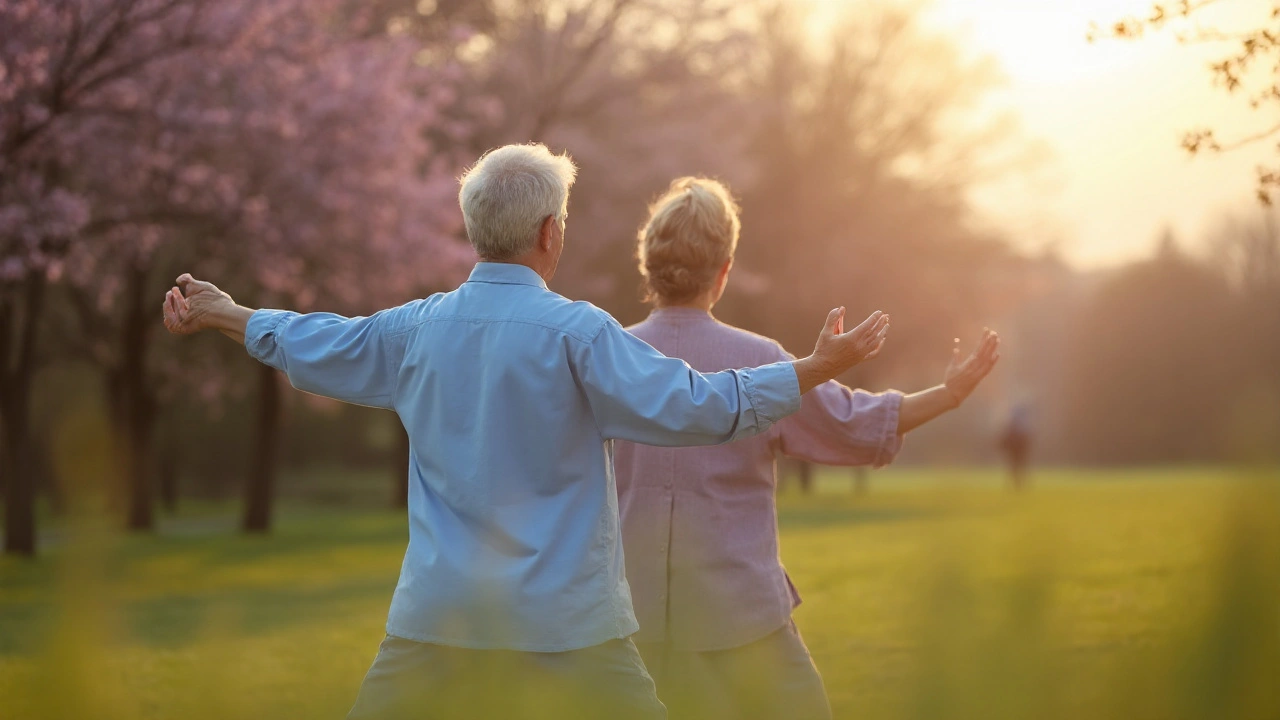
Discover why Tai Chi is a safe, low‑impact workout that improves bone density, balance and confidence for people with osteoporosis. Learn the science, practical steps and how it stacks up against other exercises.
Looking for a workout that won’t wear you out or stress your joints? Low impact exercise is the answer. It burns calories, boosts mood, and keeps you active without the pounding you get from running or high‑intensity classes. Whether you’re new to fitness, dealing with arthritis, or just need a gentler routine, these moves fit into any schedule.
Low impact workouts protect knees, hips, and ankles because they limit the force that hits the body with each step. That means less soreness and a lower risk of injury. They also improve circulation, help control weight, and support heart health – all while being easier on your muscles. Because the intensity is moderate, you can do them more often, which adds up to real results over weeks and months.
Walking – The simplest option. Walk at a brisk pace for 30 minutes, add hills or intervals for a little extra burn, and you’ll feel the benefits fast.
Swimming or Water Aerobics – The water lifts your body, so joints stay pain‑free while you get a full‑body workout. Try laps or a 20‑minute water class.
Cycling – A stationary bike or a relaxed ride outdoors works the legs without pounding the knees. Keep resistance moderate and aim for 20‑40 minutes.
Yoga – Gentle flow sequences stretch muscles, improve balance, and calm the mind. Start with a beginner video and focus on poses like cat‑cow, downward dog, and gentle twists.
Pilates – Core‑focused moves that are low impact but still strong. A mat routine of 15‑30 minutes can tighten your midsection and protect your spine.
Chair Exercises – Perfect for anyone with limited mobility. Sit and do leg lifts, seated marches, or arm circles with light weights. You still get a cardio boost without standing.
Mix and match these activities to keep things fresh. For example, walk on Monday, swim on Wednesday, and do yoga on Friday. Consistency beats intensity when you’re aiming for long‑term health.
Start slow. Begin with 10‑15 minutes of activity and add five minutes each week until you reach the recommended 150 minutes of moderate exercise per month. Listen to your body – if something hurts, ease off or switch to a different move.
Stay safe by wearing supportive shoes, staying hydrated, and warming up with gentle stretches. A quick 5‑minute warm‑up (arm swings, ankle circles) prepares your muscles and reduces the chance of strains.
Track your progress. Write down how long you exercised, what you did, and how you felt afterward. Seeing improvement in stamina or mood can keep you motivated on tough days.
Low impact exercise isn’t just for seniors or injury recovery – it’s a smart choice for anyone who wants to stay active without overloading the body. Give it a try, swap one high‑impact session for a gentle alternative, and notice the difference in energy, joint comfort, and overall well‑being.

Discover why Tai Chi is a safe, low‑impact workout that improves bone density, balance and confidence for people with osteoporosis. Learn the science, practical steps and how it stacks up against other exercises.